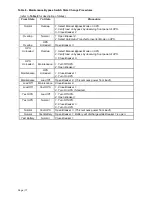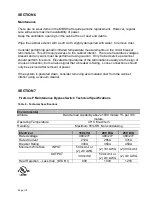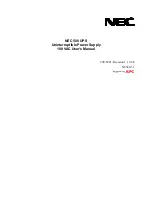
Page | 15
Need to get power to the load, but the condition of the UPS is uncertain—
1. Verify that the load is truly not powered.
2. Verify that the utility source is suitable (applying power to the load using the MBS is
at the operator’s risk).
3. Verify that BKR1 and BKR3 are open; open them if necessary.
4. Close BKR2. The load is now powered via the MBS. The UPS is not functional and
battery supported operation is not possible.
Need to operate the UPS as part of maintenance, but wish to maintain power to
load—
1. If UPS is running, perform transfer from normal mode to MBS, as instructed, above.
After opening BKR3, the UPS can be left powered (via BKR1) and/or its mode can
be changed as desired.
2. If BKR2 is already closed, close BKR1 to apply power to the UPS. If the UPS is dual
input, there is another supply that must be applied to power the rectifier.
3. There is some risk in starting the UPS while the load is powered via BKR2 (MBS
mode). A fault in the UPS could cause the upstream circuit protection (circuit
breaker or fuse) to operate, removing power from both the faulted UPS input and the
MBS input and, therefore, the output.
Potential Problems:
MBS will not allow BKR2 to close—
1. Check to see that the UPS is on bypass (SWMB is closed).
2. The UPS controls must be powered (BKR1 and SWBY should be closed).
3. Verify that the backfeed prevention interlock signals were properly wired as part of
the installation and that this wiring has not been damaged.
BKR2 in the MBS trips when power is applied—
1. This is likely due to a procedural error. Note that BKR2 and BKR3 must not be
closed at the same time unless the UPS is powered and the UPS is in bypass mode.
2. It is likely that BKR3 is closed and the backfeed prevention interlock function is
preventing BKR2 from staying closed.
3. Since the UPS is not powered, the signal that indicates that the UPS is in bypass
mode cannot be generated.
4. Open BKR3 and close BKR2. BKR2 should close and stay closed.
5. If power to the UPS is not required, open BKR1.




































